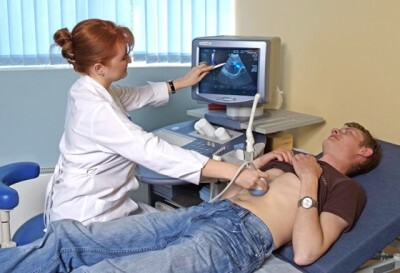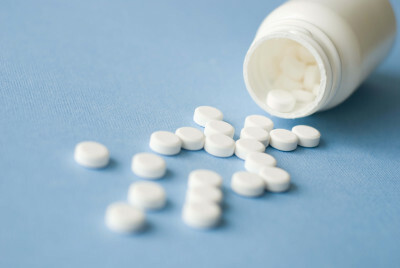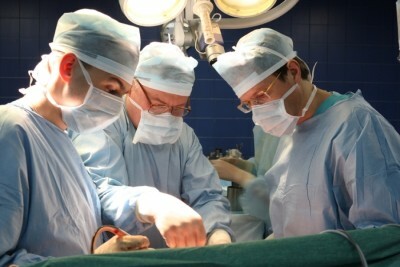1 Causes of pathology
The true cyst of the pancreas is formed due to genetic abnormalities or malfunctions in the formation of an organ in the womb of the mother. Most often cavities are small, so do not pose problems for the child. A true cyst can be detected on ultrasound by chance already in adulthood. Unfortunately, if the cyst is formed due to congenital obstruction of the gland duct, a secret begins to accumulate in it. As a result, chronic inflammation and fibrous tissue degeneration develop( cystic fibrosis or cystic fibrosis of the pancreas).
Do you have gastritis?
GALINA SAVINA: "How easy is it to cure gastritis at home for 1 month. A proven method - write down a recipe. ..!"Read more & gt; & gt;
A false cyst on the pancreas is formed differently, so the membrane is a granulation or fibrous tissue. The most common causes of pseudocyst formation are:
- Pancreatitis. During the inflammation of the pancreas, the outflow of the produced fluid is disrupted. Enzymes of the pancreas do not go out, as expected, into the intestinal cavity for digesting food. As a result, partial digestion of the organ itself begins. Acute and chronic pancreatitis is the most common cause of cyst formation.
- Injury. Mechanical damage to the pancreas can also provoke the appearance of a cavity inside the organ. This happens after a car accident, a stab wound or as a complication after surgery.
- Hemorrhage within the pancreas can occur due to a stratification of the artery that supplies blood to the gland or trauma. This phenomenon is accompanied by an edema that impedes the free movement of the secret of the prostate in the ducts.
- Pancreatic pancreatic infarction. A thrombus that detaches from the artery wall can block a blood vessel inside the organ. As a result, starvation and the gradual death of the gland tissue begins.
- Harmful habits and malnutrition. Smoking, frequent use of alcohol and love for fatty, fried, spicy and salty foods can lead to inflammatory diseases of the prostate, and as a result, a cyst on the pancreas will appear.

Recommended to read
- Nutrition for diseases of the pancreas
- What looks at the ultrasound of the abdominal cavity
- Causes and treatment of chronic gastritis in adults
- Effective agent for gastritis and stomach ulcer
2 Symptoms of the disease
The most characteristic sign of the disease is pain. It can be:
- paroxysmal;
- constant;
- herpes zoster.
-
 IMPORTANT TO KNOW! Gastritis? Ulcer? To have a stomach ulcer not turned into cancer, drink a glass. ..Read the article & gt; & gt;
IMPORTANT TO KNOW! Gastritis? Ulcer? To have a stomach ulcer not turned into cancer, drink a glass. ..Read the article & gt; & gt;
The localization of sensations differs: it can be pain in the region of epigastrium, right or left hypochondrium, in the entire upper abdomen or in the navel. Strong pains are characteristic of cysts pressing on the solar and celiac plexus of the abdomen. Although it is not uncommon for a patient with a large cyst to feel moderate pain and a feeling of pressure in the stomach.

In addition to pain, a person may experience weakness, systematic body temperature rises, as well as signs of dyspepsia: nausea, vomiting and stool disruption. The person spontaneously loses weight.
The cyst of the head of the pancreas is often accompanied by signs of mechanical jaundice( skin itch, greenish skin tone, fever and steatorrhea).Along with this, the color of urine becomes dark, and the feces become noticeably lighter. These disorders are due to the fact that the cyst covers the pancreatic ducts and prevents a normal outflow of secretions.
Destructive processes in the organ can be accompanied by infection, as a result of the patient's body temperature rises, chills begin and general weakness develops. When the pancreas cyst reaches a large size, any push, jump or punch can cause it to rupture. In this case, the liquid contained in it is poured out into the abdominal cavity and bleeding begins. A person's condition deteriorates sharply, he feels a sharp pain and weakness, a cold sweat appears on his body, and the patient loses consciousness. If you have several of the signs listed above, it is better to immediately consult a gastroenterologist for advice and examination.
-
 Gastroenterologist. IMPORTANT: "I beg you, if you began to worry about abdominal pain, heartburn, nausea, do not in any way do gases. .."Read more & gt; & gt;
Gastroenterologist. IMPORTANT: "I beg you, if you began to worry about abdominal pain, heartburn, nausea, do not in any way do gases. .."Read more & gt; & gt;
3 Diagnostic measures
The most simple and affordable method of diagnosing pancreatic cyst is an ultrasound examination. During ultrasound of the abdominal cavity, the doctor pays attention to the pancreas and surrounding organs, determines the presence of a pathological cavity inside or outside the organ, determines its location, configuration and size.

To distinguish the cyst of the pancreatic cancer from a cancer, chronic pancreatitis or an aneurysm, it is necessary to make a more detailed study - magnetic resonance imaging. To detect inflammation, the type of pathogen, or the presence of malignant tissue degeneration, a pancreas biopsy is performed. A special needle is inserted through the abdominal wall and a small sample of the contents of the cavity is taken. The whole procedure is under the control of ultrasound or computed tomography. To determine whether there is hidden bleeding in the cyst cavity, a blood test is performed on hemoglobin and hematocrit.
TIP FROM THE MAIN GASTROENTEROLOGIST
Korotov SV: "I can recommend only one remedy for the rapid treatment of Ulcer and Gastritis, which is now recommended by the Ministry of Health. .." Read testimonials & gt; & gt;
4 Conservative treatment of
The medical treatment of the pancreatic cyst is in principle unpromising. After all, the cavity can be removed only surgically, but if the cyst is benign and the patient is not bothered by severe pain, you can temporarily give up the operation.
The size of small formations is systematically controlled, and the patient is prescribed a diet and medications that improve the overall condition.
Depending on the clinical manifestations, the patient is prescribed:
- Antiemetics( Cerucal, Motilium).
- Veterinary preparations( Espumizan, Herbion gastric drops, Disflatil, Meteopazmil, Pankreoflat, Simethicone).
- Spasmolytics( No-sppa, Papaverin, Bellastezin, Meteopazmil, Riabal, Duspatalin).
- Anesthetics( Baralgin, Trigan-D, Acetaminophen, Pentalgin).
- Digestive enzymes allow replenishment of secretory deficiency of the pancreas( Creon, Festal, Pancreatin, Mezim).

5 Features of nutrition
Diet for the pancreatic cyst has its own characteristics:
- Proteins and carbohydrates do not limit.
- Food is taken in small portions 5-7 times a day.
- Fat food is banned.
- Restrictions apply to acidic foods and food containing fiber.
The cyst on the pancreas has manifestations similar to pancreatitis. In this regard, the diet is prescribed the same as in inflammation of the pancreas, treatment of cysts conservative or operational is closely related to dietary nutrition.

More detailed recommendations include:
- Soup on vegetable broth with the addition of a small piece of butter or 1 tbsp.l.sour cream.
- Mashed soup on a meat broth with oatmeal, rice, mango, vermicelli, buckwheat, carrots, potatoes, cauliflower, pumpkin. If desired, you can fill the soup with a spoonful of sour cream or a slice of butter.
- The daily norm of vegetable( 15 g) and butter( 25-30 g) is added to the food.
- Boiled or jellied fish of low-fat breeds. Raw, wiped or baked non-acid fruits and berries. It is allowed compote of dried fruits and baked apples.
- Of drinks recommend a decoction of rose hips, diluted 1: 2 fruit and berry juice, not strong tea with lemon or milk.
- Steamed cereals( rice, buckwheat, oatmeal or barley and semolina) cooked on water or in half with milk are passed through a blender. Boiled pasta and casseroles.
- Meat of dietary varieties( beef, rabbit, turkey, chicken) are boiled or steamed, using chopped or ground. Before cooking with chicken and turkey skin is removed.
- Boiled eggs or scrambled eggs.
- Dairy and sour-milk products with low fat content.
- Dried black and white bread, white bread crumbs, biscuit biscuits.
- Baked and boiled vegetables that do not contain coarse fiber.
When diagnosed as a cyst on the pancreas, it is forbidden to consume:
- Fried, fatty and salty foods.
- Salo, pork, duck and goose meat, all kinds of offal.
- Marinated vegetables and marinades themselves, smoking and sausage products.
- Coffee and grape juice.
- Ice cream, ice, cold and carbonated drinks.
- Canned food and caviar.
- Loose cereal, wheat grits and bran.
- Borsch, beetroot, okroshka, soup, milk and mushroom soup, soup on fish broth.
- Pulses, white cabbage, radish, beets, radish, bell peppers and paprika, eggplant, turnips, onion, garlic, tomato, spinach, sorrel.
- Grapes, raspberries, dates, pineapples, figs, avocados, bananas.
- Jam, chocolate, cakes, pastries, baked pastries and other confectionery.
- Fresh bread.
- Pepper, cloves, vanilla, bay leaves and other spices.
- Alcohol.
- Semi-finished and fast food.
Among the general recommendations are a ban on the intake of hot and cold food, because the temperature contrast has an irritant effect on the digestive system. Food should be taken in a crushed and grated form, so that rough food does not load the stomach and weakened pancreas.
6 Surgical intervention
Symptoms and treatment of the pancreas depend on the severity of the pain. After all, pain can be indicative of the overlap of a rapidly growing cyst of outflow ducts, the development of inflammation in the gland. The operation is recommended when the formation is 5 cm or more in size. If the cyst does not exceed 4 cm and does not cause severe discomfort, the operation is postponed and an annual ultrasound examination is recommended. A malignant cyst requires urgent surgery. In the case of pancreatic cancer, the prognosis is not very favorable.

An untimely operation may deprive a person of work capacity, lead to disability or death. Among serious complications of the disease are called:
- Mechanical jaundice developing due to the fact that the cyst compresses the bile duct.
- A ruptured cyst and an outflow of pancreatic juice into the pleural or abdominal cavity.
- Purulent inflammation and abscess formation.
- Bleeding, which almost always ends with the death of the patient.
Operative treatment of the prostate cyst occurs by removal, internal or external drainage. The surgeon makes a decision depending on the size, location and characteristics of the cyst. Removal of education is carried out together with a part of the pancreas.
Urgent surgical intervention is indicated when a false cyst on the pancreas penetrated the pleural and abdominal cavity. To do this, the external drainage of the cyst and the cyst stitching inside the abdominal wall. A frequent complication is the purulent fistula of the prostate.
Emergency surgery is prescribed for patients with a fast-growing cyst, as well as for those whose education squeezes the gland's head, the far parts of the bile duct. If the cyst on the pancreas is festering, during the operation its cavity is washed with antiseptics and external drainage is performed.
When the cyst does not give complications, the planned operation is performed by the method of internal drainage with the formation of cystodeoanastomosis. This method is recommended in such a postoperative complication as a postnecrotic cyst. The cavity of the cyst is opened and drained. If the cyst boundary is problematic, its walls are loose or poorly formed, the cyst is excised along with a small part of the healthy gland tissues. To avoid repeated accumulation of pancreatic secretions between the cyst and the small intestine, an anastomosis is created.
This operation can be performed in a laparoscopic way, which brings the patient less discomfort and is accompanied by a reduced number of postoperative complications. If you have a cyst on the pancreas, do not delay the full diagnosis and treatment.
- 1 Causes of pathology
- 2 Symptoms of the disease
- 3 Diagnostic measures
- 4 Conservative treatment
- 5 Features of nutrition
- 6 Operational intervention
Did you know that the pancreas cyst can form in the fetus in the first trimester of pregnancy, the symptoms and treatment depend on the size of the formation and the pressure on the surrounding organs. From the inside, this cyst is lined with epithelial tissue, it is called true. There is also a false cyst on the pancreas, this species is much more common. A fluid-filled cavity inside or outside the body consists of a loose fibrous tissue.



